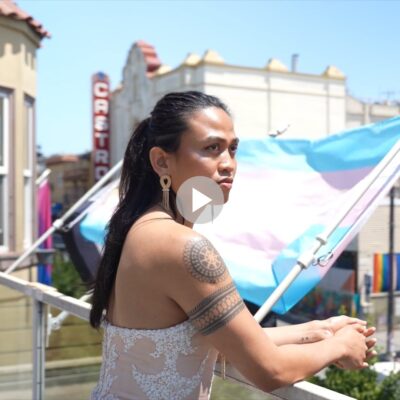San Francisco
People Living with HIV
San Francisco has one of the largest populations of people living with HIV in the United States with an estimated 15,537 people living with HIV (“HIV Epidemiology Annual Report” 1). The total number of people living with HIV in San Francisco has been on the decline since 2018, with the number of deaths among people living with HIV being greater than the number of new diagnoses.
Of the total number of San Franciscans living with HIV/AIDS at the end of 2022, 8,579 were living with HIV ever classified as stage 3 (“AIDS”). AIDS is a late-stage HIV disease defined by a low count of CD4 cells or an opportunistic infection (“HIV Epidemiology Annual Report” 100).
As of December 2022, 73% of people living with HIV (15,537) in San Francisco were over age 50 (“HIV Epidemiology Annual Report” 3).
New Diagnoses
The number of new HIV infections occurring in San Francisco has fluctuated in recent years due to disruptions in HIV testing caused by the Covid-19 pandemic. Overall, there has been a decline in the number of new HIV diagnoses since 2013. In 2022, there were 157 people diagnosed with HIV in San Francisco (“HIV Epidemiology Annual Report” 1).
Of those newly diagnosed with HIV in 2022, 84% identified as cisgender men and 61% were men who have sex with men and men who have sex with men who also inject drugs (11%) (“HIV Epidemiology Annual Report” 2).
Among all people diagnosed in 2022, Latine people accounted for the highest proportion at 43% followed by 29% whites, 15% Black/African Americans, and 10% APIs. The proportion of new diagnoses among Latine people has grown from 27% to 43% between 2013 and 2022 (“HIV Epidemiology Annual Report” 1).
When considering population size by race and sex, Black and African American cisgender women have the highest rates of new HIV diagnoses in all years since 2015 (“HIV Epidemiology Annual Report” 9).
A total of 17% of people diagnosed with HIV in 2022 were experiencing homelessness; among all people diagnosed from 2013 to 2022, a total of 341 people were homeless at the time of HIV diagnoses (“HIV Epidemiology Annual Report” 72).
Compared to persons who were not homeless and diagnosed with HIV in 2013 to 2022, persons who experienced homelessness at time of HIV diagnosis were more likely to be women or trans women, Black/ African American, and people who inject drugs. (“HIV Epidemiology Annual Report” 72).
HIV Care & Viral Suppression
90% of people newly diagnosed with HIV in 2022 entered care within one month of their diagnosis (“HIV Epidemiology Annual Report” 19).
Between January and September 2022, 80% of persons diagnosed (133) were virally suppressed within six months (“HIV Epidemiology Annual Report” 19).
Among people living with HIV who lived in San Francisco based on their most recent address, 73% were virally suppressed in 2022. (“HIV Epidemiology Annual Report” 16). People who are virally suppressed have better health outcomes and do not transmit HIV to other people.
The proportions of persons with HIV who received care and were virally suppressed in 2021 were higher in San Francisco than in California and the U.S. (“HIV Epidemiology Annual Report” 26).
Viral suppression was lower among cis women, trans women, Black and African American people, people ages 30 – 39 years, people who inject drugs, heterosexuals, and people experiencing homelessness (“HIV Epidemiology Annual Report” 16).
Among persons diagnosed with AIDS in the years 2012-2021, survival probability at 36 months (three years) was lower among whites, Black and African American people, people who inject drugs, cis women, and people experiencing homelessness (“HIV Epidemiology Annual Report” 36). Drug overdose accounted for 18% of deaths among people living with HIV from 2018 to 2021 (“HIV Epidemiology Annual Report” 42).
In San Francisco...
People were diagnosed with HIV in 2022
of people diagnosed with HIV were younger than 30
of newly diagnosed people become virally suppressed within six months of diagnosis
In California
In California, 141,001 people were living with diagnosed HIV in 2021 (“California HIV Surveillance Report” 9). Of those people, 73% were in HIV care and 64% achieved viral suppression (“California HIV Surveillance Report” 12).
Hispanic/Latine people in California made up the greatest proportion of new diagnoses (52%), followed by people who are white (23%), Black/African American people (18%) and Asian people (5%) (“California HIV Surveillance Report” 6).
In the United States
In the United States, approximately 1.2 million people are living with HIV today. About 13 percent of them (1 in 7) don’t know it and need testing (“CDC Statistics Overview”).
There were 36,136 HIV diagnoses in 2021. From 2017 – 2021, the annual number of HIV diagnoses decreased from 36,500 to 32,100. (“CDC Statistics Overview”).
Hepatitis C
Hepatitis causes inflammation of the liver and can lead to cirrhosis (scarring), liver cancer, liver failure and death. The most common types are hepatitis A, hepatitis B and hepatitis C. The hepatitis C virus (HCV) infects and can severely damage the liver. It is the most common chronic blood borne disease in the United States; approximately 4-6 million persons are infected (“About Hepatitis C”).
The End Hep C SF initiative estimates that approximately 12,000 people in San Francisco are living with active HCV infection, despite the existence of an easy-to-complete, highly effective cure. Additionally, San Francisco has the highest liver cancer rate in the nation, most of which is attributed to high rates of hepatitis B and hepatitis C virus infections (“About Hep C SF”).
People living with HIV are at higher risk for contracting HCV, and approximately 8% of PLWH are co-infected with HCV. People who inject drugs are the vast majority of those diagnosed with HCV infection, and are least likely to access treatment. Men who have sex with men (MSM) and baby boomers are also disproportionately affected by HCV. While trans women make up a small percentage of the total population of San Francisco overall (0.1%), End Hep C SF estimates that more than 1 out of every 6 trans women is currently living with HCV (“About Hep C SF”).
Sources
California Department of Public Health, Center for Infectious Diseases, Office of AIDS. California HIV Surveillance Report, 2021. California HIV Surveillance Report, 2021.
Centers for Disease Control and Prevention. HIV Surveillance Report: Diagnoses of HIV Infection in the United States and Dependent Areas, 2021.
Centers for Disease Control and Prevention. Statistics Overview. Accessed December, 2023.
San Francisco Department of Public Health Population Health Division. HIV Epidemiology Annual Report, 2022.
End Help C SF. About Hep C SF. Accessed January, 2021.
San Francisco Hepatitis C Task Force. About Hepatitis C. Accessed December, 2020.
Last updated: 12/5/23





